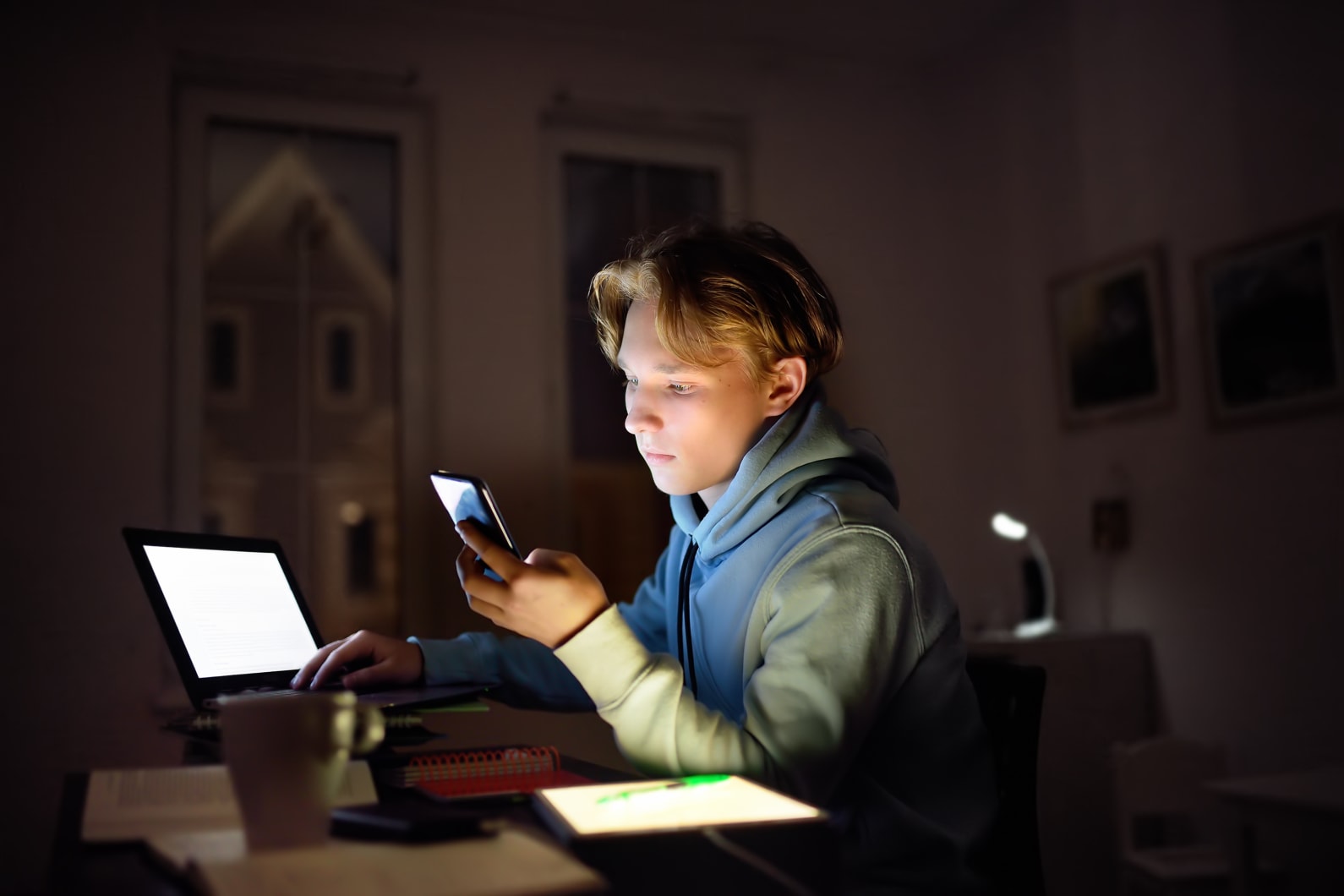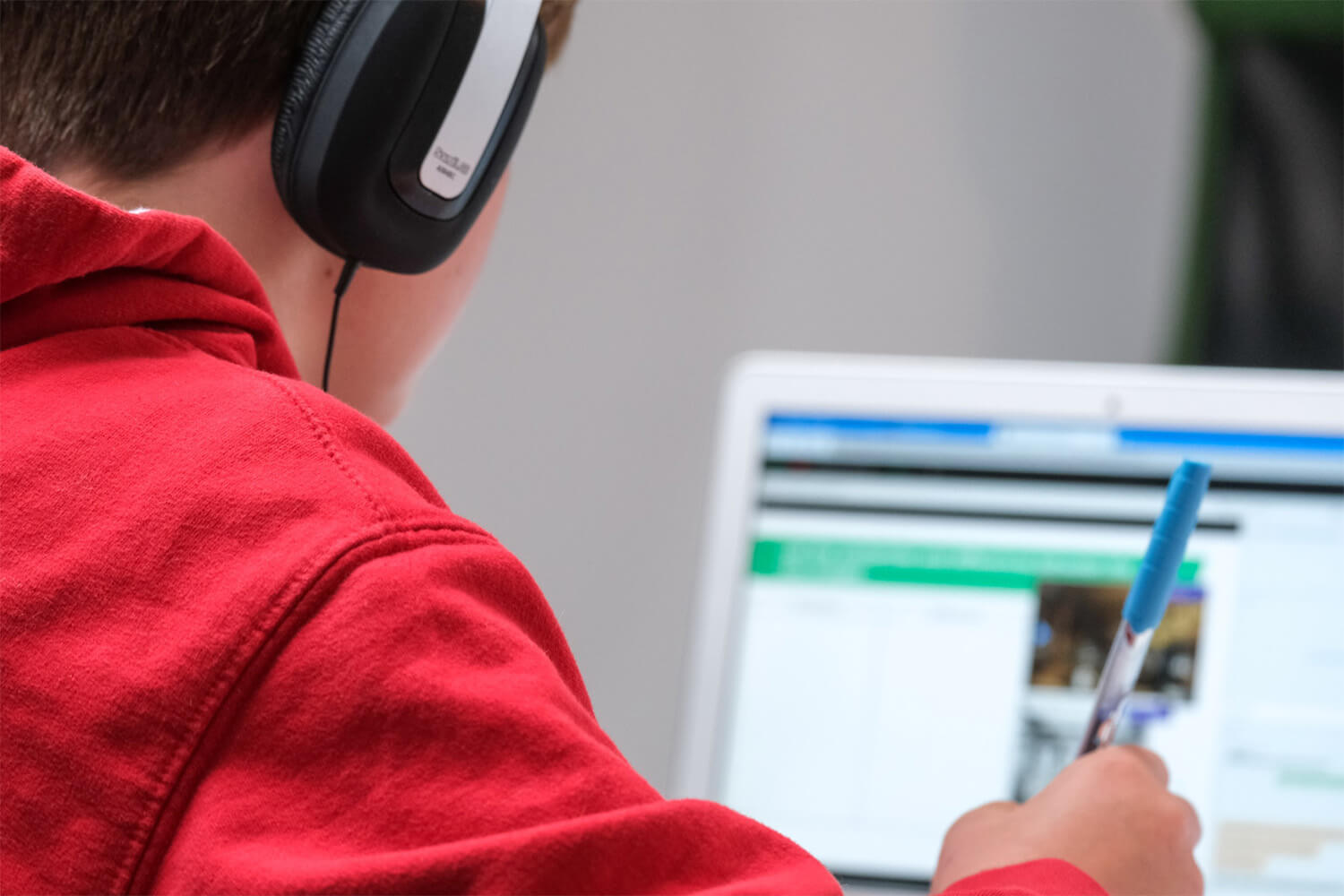Updated article originally published August 14, 2018.
Many pedagogical approaches are premised on envisioning and counteracting certain educational roadblocks. One potential roadblock that is seemingly unavoidable is the presence of personal electronics in the classroom. A quick look into any higher education lecture hall would reveal almost as many laptops as students.
Ostensibly, the laptop is an optimized note-taking tool, offering students this essential function in addition to the ability to follow along with lecture media materials, to access additional course materials on an LMS (Brightspace, Canvas, Blackboard, etc.), to Google search questions, and to communicate with other students. While none of these elements are inherently negative, they each fundamentally force the student to multitask. On top of this, the devices offer a portal into non-class related distractions, which further challenges student focus.
Multitasking Research
The impact of multitasking on learning is a prominent research topic. Predictably, a study from Rutgers University found that the use of personal electronic devices during lecture—when used for activities unrelated to the classroom—negatively impacts students’ grades. Professor Arnold Glass has been teaching cognitive psychology for over 40 years and has long been an advocate of technology in the classroom; however, while he continues to embrace learning technology, laptops and cell phones are no longer welcome in his classroom during lectures.
Glass’ viewpoint is partially informed by a study he and his teaching assistant Mengxue Kang conducted measuring a class of 118 psychology students’ performance against themselves. Personal electronic devices were forbidden from the classroom for every other lecture held throughout the semester and proctors were in class to enforce the rule. This meant that individual student access to personal electronics was limited to alternating weeks, creating a way to observe performance for course content and differentiate between learned material with and without the possibility of technological distraction.
Throughout the semester students were tested with a variety of assessments (daily quizzes, midterms, and a final exam). All students performed worse on material covered on days that allowed the use of electronic devices, thus proving a causal link between students’ technology in the classroom and academic performance. Despite these findings, Glass acknowledges that requiring students to put away their devices for the entirety of a lecture can be an uphill battle and unpopular amongst students. This is particularly worrisome for instructors concerned with how such policies could impact their student evaluations.
Elsewhere, a team of researchers surveyed multitasking in education literature, offering several crucial insights. While they confirm findings from Glass with similar research works, they note several other important dimensions that come out of the work in the area. One key element is time; students who multitask while studying ultimately spend more time studying, which can have consequences such as time-management issues, stress, etc.
The team of researchers also delved into the discourse on effective (i.e. observably beneficial) multitasking, which suggests that students can leverage multitasking to result in a more complex engagement with the learning concept they are engaging with. The team’s research suggests that as an activity for self-regulation, multitasking could carry valuable potential. However, oftentimes multitasking can be reduced to a quantitatively negative metric that leaves tasks incomplete.
Multitasking, Distraction, and Online Learning
The already complex notion of multitasking gains infinite layers of complexity when considering online learning. Whether via synchronous or asynchronous instruction, remote education fuses the student to their personal electronic device, making the traditional method to reduce multitasking—no technology in the lecture—an impossibility. This mandatory use of digital devices for online learning leads to an enhanced probability of distraction, but distraction does not always have to be the case.
The Derek Bok Center for Teaching and Learning at Harvard University took aim at technologically induced distraction, providing a series of recommendations that can also apply to online learning. These recommendations are premised on the idea that technology is not itself the problem; rather, the issue is distraction, and personal devices are merely the avenue for this. Thus, solutions derive from targeting attention:
- Pedagogical variety and interactivity – By diversifying teaching content (lectures, question periods, active discussions, interactive quizzes, videos, images, group activities, etc.), disengaged students will be more enticed to remain focused.
- Proximity – In an online context, this equates to the availability of the instructor.
- Humour – “Laughter in the classroom can make students more comfortable, lower their affective filter, encourage intellectual risk-taking, decrease anxiety, and establish a more productive student-teacher relationship.”
Minimizing Distracted Learning
Research shows that the effects of multitasking are complicated. However, distraction-free learning is more effective than distracted learning. Since multitasking has become inevitable in online learning. It may be increasingly important to look at ideas that help minimize the negative aspects of multitasking and promote engagement. The offerings from Harvard are small steps that could go a long way to helping students remain focused. But you may want to do more research to find the resources that best fit your situation.



